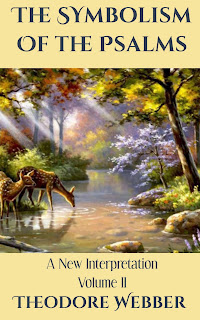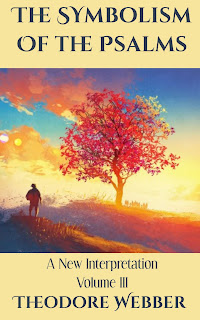I have now published all three volumes of the Symbolism of the Psalms, which is a new translation of the Psalms containing a complete commentary of the Psalms based on the writings of Emanuel Swedenborg. Each work is rather large. The first volume is available as paperback or e-book, and volumes 2 and 3 are available as e-books. Here is The Symbolism of the Psalms, Vol. 1 - this covers Psalms 1-41 -
Here is The Symbolism of the Psalms, Vol. 2 - this covers Psalms 42-89 -
Here is The Symbolism of the Psalms, Vol. 3 - this covers Psalms 90-150, and also includes a complete index of the spiritual meaning of the words mentioned in the Psalms:
The Psalms is the largest book of the Bible, and the spiritual interpretation is based upon 27 years of waking visions of heaven by Emanuel Swedenborg in the 18th century. However these interpretations are scattered throughout over 40 volumes of works. One complication that arose is that every Psalm has a mistranslation, and many of these affect the interpretation of the passage. These are documented in another work, The Mistranslations of the Psalms. This work also complete restores the stanzas of each Psalm showing thematic shifts, but are also based on numeric considerations which are documented in The Secret Code of the Psalms. The latter work is more technical, and is useful to demonstrate the veracity and accuracy of the Hebrew text. It also contains a proof that scripture is Divinely inspired, as some of the numeric patterns are based on very accurate estimates on the number of pi.
However if you are looking for a good group study of scripture, The Symbolism of the Psalms will explain how each Psalm is directly applicable to one's life.
Here is The Symbolism of the Psalms, Vol. 2 - this covers Psalms 42-89 -
Here is The Symbolism of the Psalms, Vol. 3 - this covers Psalms 90-150, and also includes a complete index of the spiritual meaning of the words mentioned in the Psalms:
The Psalms is the largest book of the Bible, and the spiritual interpretation is based upon 27 years of waking visions of heaven by Emanuel Swedenborg in the 18th century. However these interpretations are scattered throughout over 40 volumes of works. One complication that arose is that every Psalm has a mistranslation, and many of these affect the interpretation of the passage. These are documented in another work, The Mistranslations of the Psalms. This work also complete restores the stanzas of each Psalm showing thematic shifts, but are also based on numeric considerations which are documented in The Secret Code of the Psalms. The latter work is more technical, and is useful to demonstrate the veracity and accuracy of the Hebrew text. It also contains a proof that scripture is Divinely inspired, as some of the numeric patterns are based on very accurate estimates on the number of pi.
However if you are looking for a good group study of scripture, The Symbolism of the Psalms will explain how each Psalm is directly applicable to one's life.























